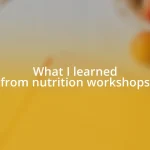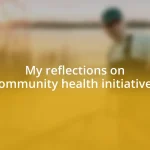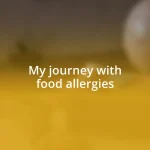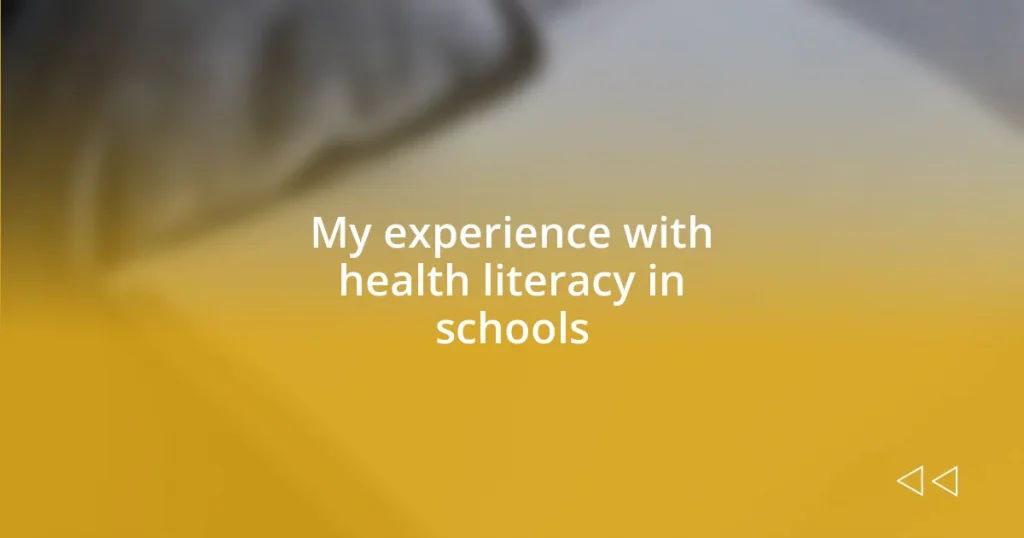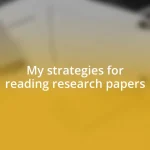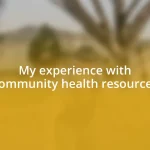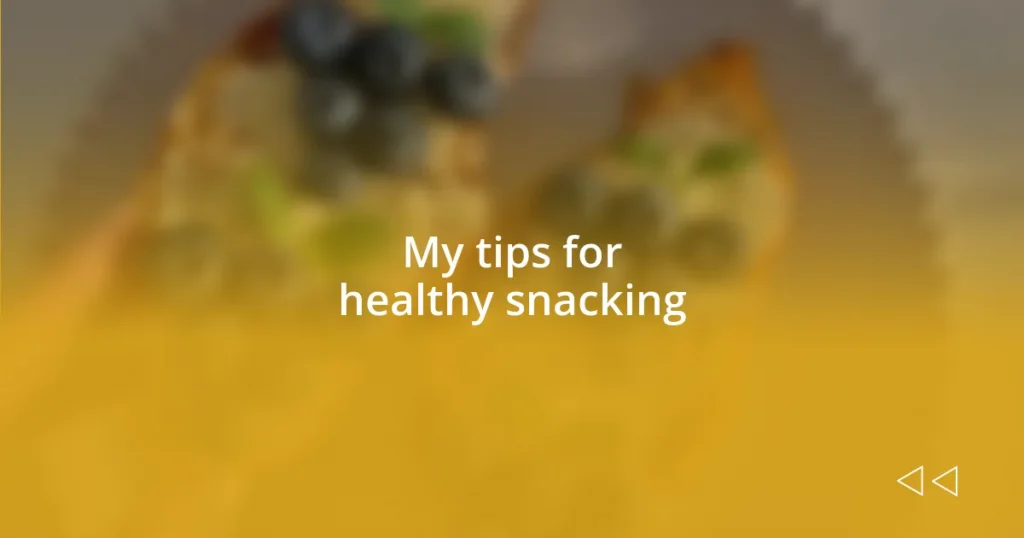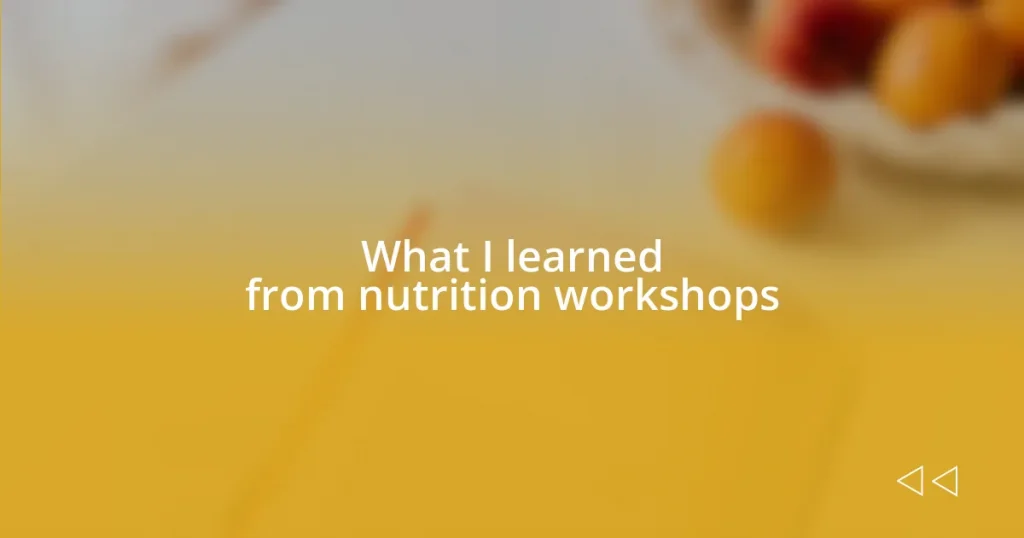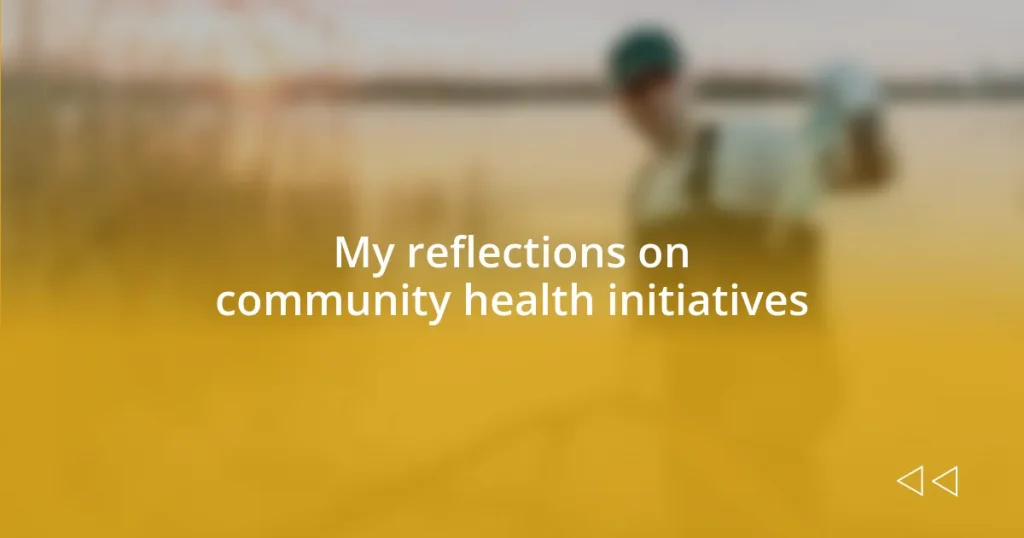Key takeaways:
- Health literacy empowers individuals to make informed health decisions and is closely linked to critical thinking skills.
- Challenges in promoting health literacy include varying knowledge levels among students, lack of teacher training, and external misinformation from social media.
- Effective teaching strategies involve real-life scenarios, interactive workshops, and fostering discussions that connect students’ personal experiences to health topics.
- Ongoing program evaluation and collaboration among educators are essential for maintaining the relevance and effectiveness of health literacy education.
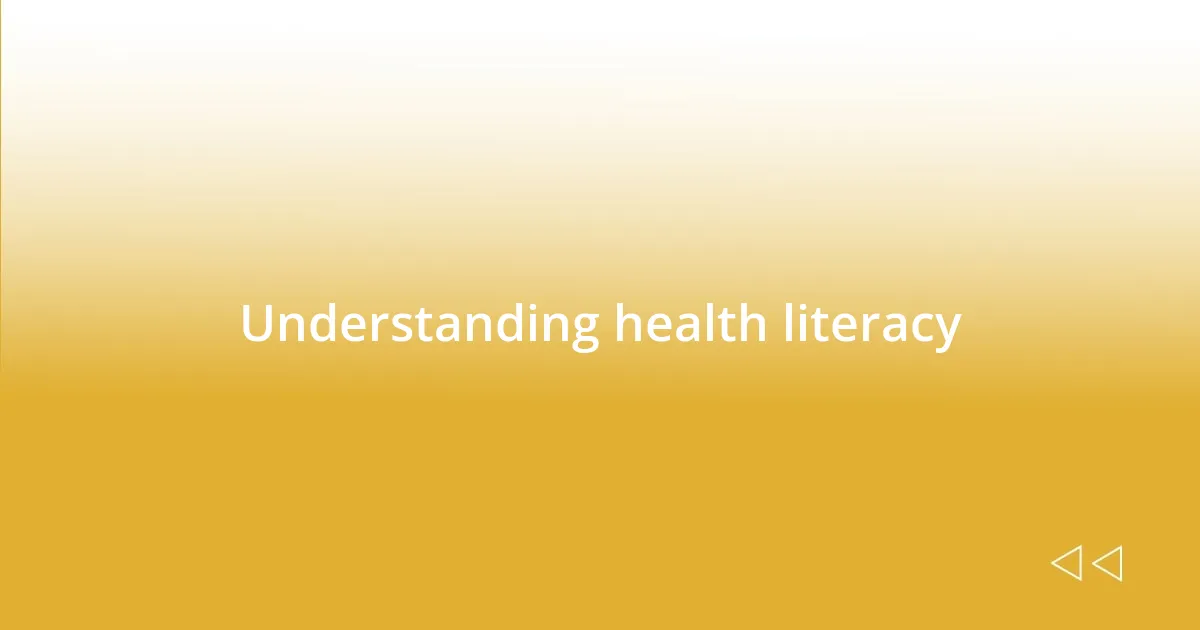
Understanding health literacy
Health literacy is more than just understanding medical jargon; it’s about empowering individuals to make informed decisions about their health. I remember a time when I struggled to understand my doctor’s instructions after a routine check-up. Why was the information so hard to grasp? This experience opened my eyes to how vital it is for students to not only learn about health but also to comprehend the language surrounding it.
As I delved deeper into educational materials on health literacy, I realized that it goes hand in hand with critical thinking skills. For instance, during a school health class, we analyzed case studies of different health scenarios. Engaging in these discussions made me reflect on how often we might accept information without really questioning it. Can we truly take charge of our health if we don’t know how to evaluate the validity of the information we receive?
In my experience, schools play a crucial role in developing health literacy among students. I’ve seen firsthand how simple activities, like role-playing conversations with a healthcare provider, can demystify the patient experience. It made me feel more in control of my health journey. Isn’t it fascinating to think that with the right tools, we can transform the way students approach their health and wellness?
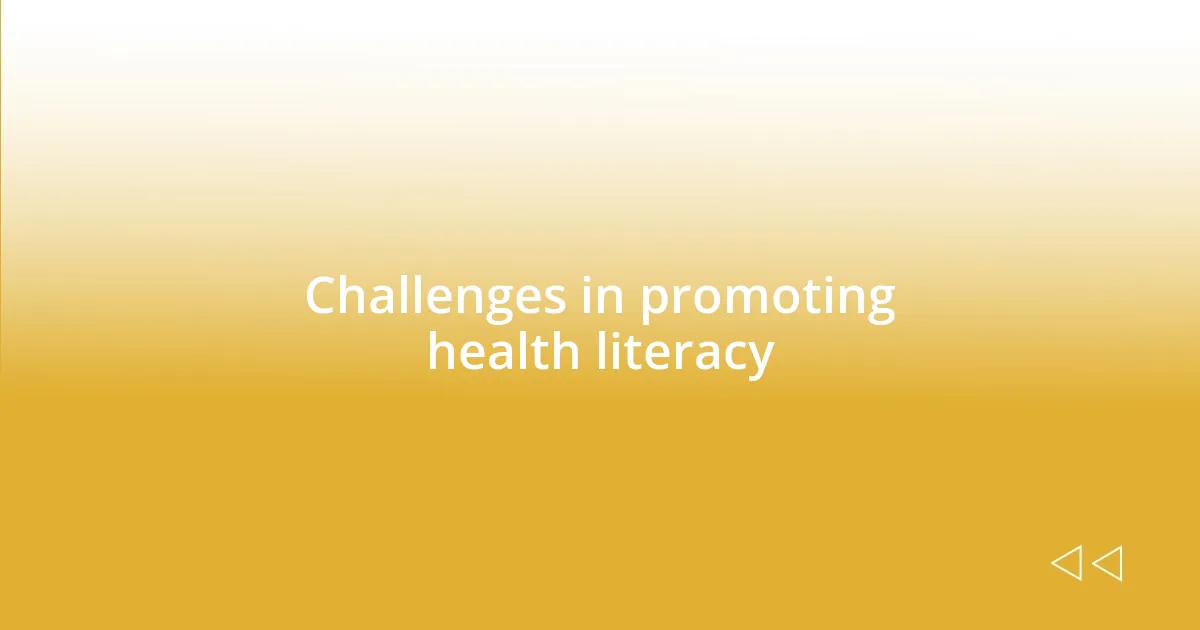
Challenges in promoting health literacy
Promoting health literacy in schools comes with its own set of challenges. One significant hurdle is the varying levels of health knowledge among students. I recall a classroom discussion where some students were completely unaware of basic nutrition concepts, while others had background knowledge from their home environment. This disparity made it tough for educators to tailor lessons that resonated with everyone, highlighting just how critical personalized approaches are.
Another challenge is the lack of training for teachers in health literacy. I once attended a school-led workshop where the facilitator struggled to convey essential health topics effectively. It became clear to me that many teachers might not feel equipped to discuss health issues, which can limit the depth of information shared and, ultimately, student understanding. Without proper training, how can we expect educators to inspire curiosity and promote awareness among their students?
Finally, there’s the issue of external influences, such as social media and advertising. I’ve witnessed students being swayed by trends they see online, often without any understanding of the implications for their health. This influences their perceptions of what constitutes healthy behavior. It’s crucial for schools to counteract this misinformation by providing robust health education that helps students critically analyze what they encounter outside the classroom.
| Challenge | Description |
|---|---|
| Varying Knowledge Levels | Disparities among students in health knowledge can make tailored teaching difficult. |
| Lack of Teacher Training | Many educators may not feel equipped to teach health literacy effectively. |
| External Influences | Social media and advertising often promote misinformation about health. |
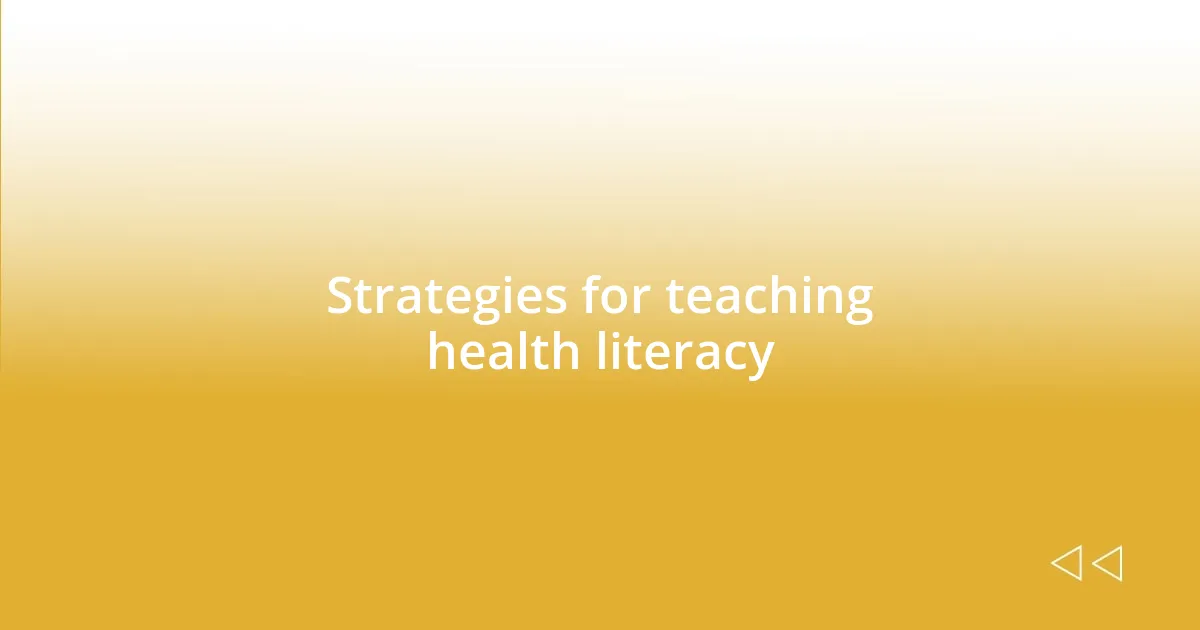
Strategies for teaching health literacy
In my journey through health literacy education, I’ve discovered several effective strategies that truly engage students. One approach that stands out is incorporating real-life scenarios into lessons. I vividly remember a project where we researched a health issue affecting our community. It ignited a passion in my classmates, and I noticed how deeply they connected the information to their lives. This strategy not only makes learning relevant but also fosters empathy among students.
Here are some strategies I found particularly effective in teaching health literacy:
-
Interactive Workshops: Host workshops that involve students in role-playing or simulations, bringing health topics to life.
-
Use Technology: Leverage apps and online resources that encourage self-assessment and exploration of health topics relevant to students.
-
Peer Education Programs: Create space for students to teach each other, which can solidify their knowledge and build confidence.
-
Community Engagement: Partner with local health experts for guest lectures or Q&A sessions to provide real-world context.
-
Creative Projects: Encourage students to express their understanding of health topics through art or presentations, making learning enjoyable and memorable.
Understanding the emotional aspects of health literacy is crucial. When I engaged in discussions about mental health, I remember feeling a wave of relief as my peers shared their own struggles. It was powerful to witness the vulnerability and openness of my classmates. These moments underscore the importance of creating a safe environment where students feel comfortable discussing sensitive topics, allowing for deeper understanding and connection.
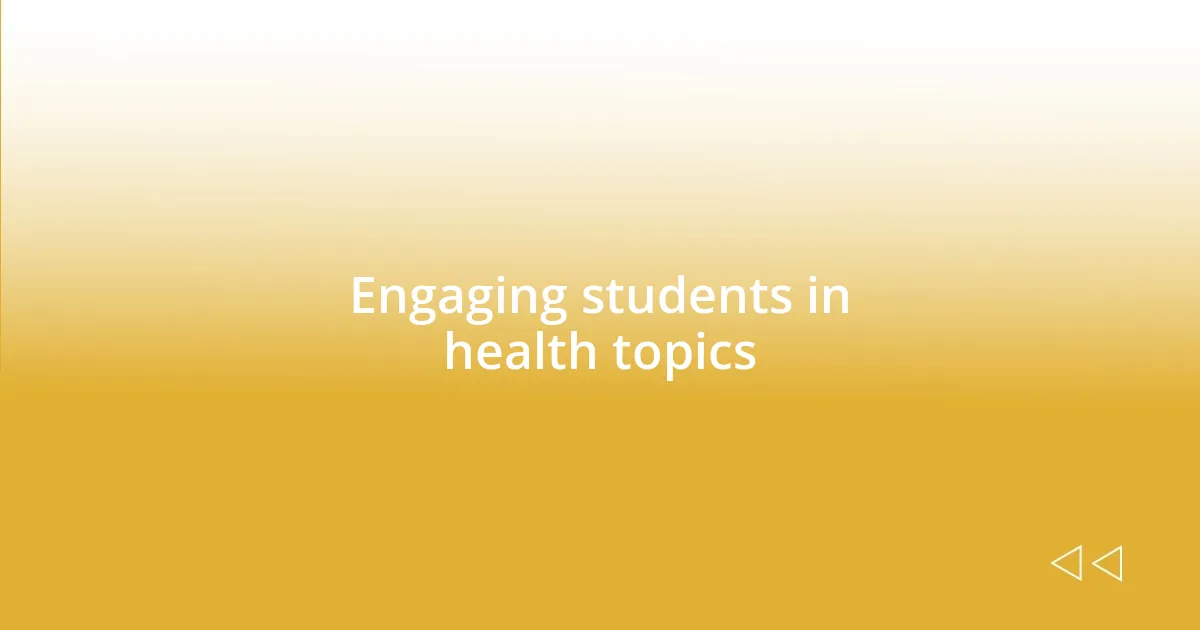
Engaging students in health topics
Engaging students in health topics is about making the learning experience interactive and relatable. One time, I sparked a heated discussion by asking my classmates, “What does health mean to you?” The room buzzed with a mix of excitement and surprise, as students began sharing their own ideas and experiences. I could see that this personal connection really fueled their interest in understanding health better, demonstrating how effective a simple question can be in drawing students into deeper discussions.
Using multimedia tools has also been a game-changer in keeping students interested. I remember introducing a short documentary about a local health issue, which captivated everyone’s attention. Observing my classmates’ reactions was enlightening; their eyes were glued to the screen, and later, they couldn’t stop discussing the implications it had for our community. It showed me the power of visual storytelling in promoting awareness and igniting curiosity about health topics.
Additionally, I’ve learned that incorporating hands-on activities is essential for engagement. During a health fair project, we set up interactive booths where students could participate in fun quizzes and sample healthy snacks. The atmosphere was electric; laughter and camaraderie filled the air as they competed for small prizes. This not only solidified their understanding but also made health education a memorable and enjoyable experience. How can we create more moments like this to make health literacy something students actually look forward to? I believe it’s all about tapping into their interests and making the lessons come alive.
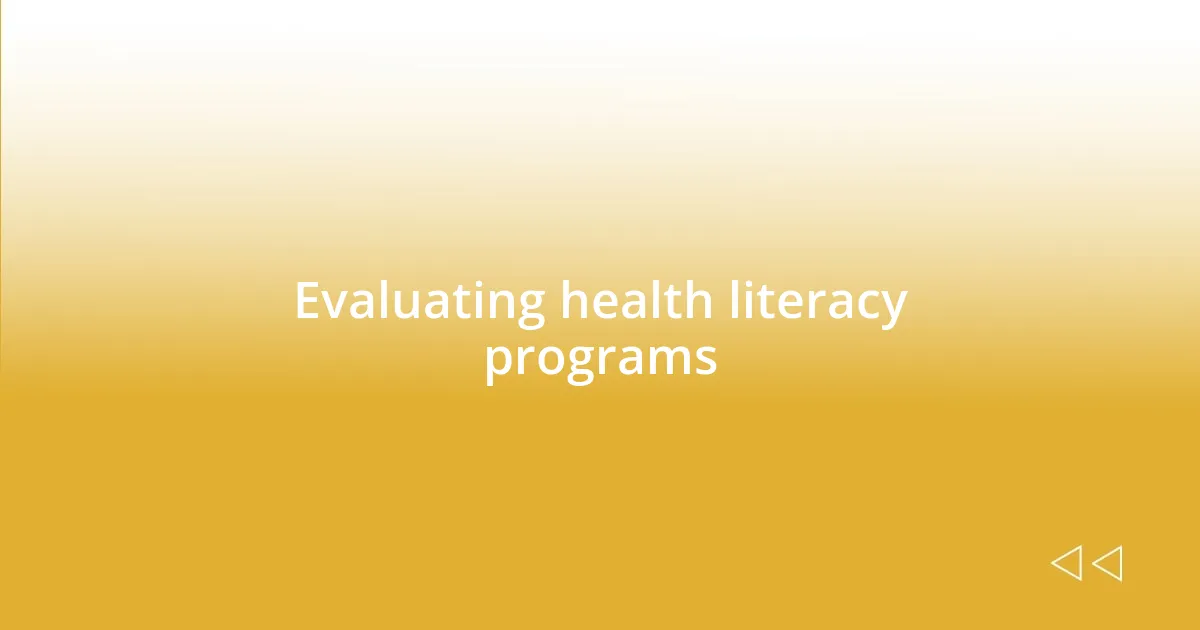
Evaluating health literacy programs
Evaluating health literacy programs involves a careful assessment of their effectiveness and impact on students. I’ve seen firsthand that simply implementing a program isn’t enough; evaluating how well it resonates with the students is crucial. During one program, we had to gather student feedback through surveys after each session. I was astonished by the honesty that came through. It allowed us to adjust our approach in real-time and ensure the lessons were truly meeting the needs of the students.
One aspect many educators overlook is the long-term retention of health information. I recall participating in a follow-up study a few months after a health literacy program ended. Surprisingly, many students struggled to recall key concepts, highlighting the importance of reinforcement in education. If knowledge doesn’t stick, what’s the point? This experience reinforced my belief that integrating ongoing evaluations can help us tweak our programs to keep the information relevant and accessible.
Lastly, collaboration among educators is vital in the evaluation process. I remember sitting down with colleagues to discuss our observations and share outcomes from various health literacy initiatives. This exchange was enriching, revealing different perspectives and strategies to enhance our programs collectively. How can we harness these collaborative evaluations to strengthen our teaching? It’s about creating a community where feedback is valued, paving the way for programs that genuinely empower students to navigate their health journeys effectively.
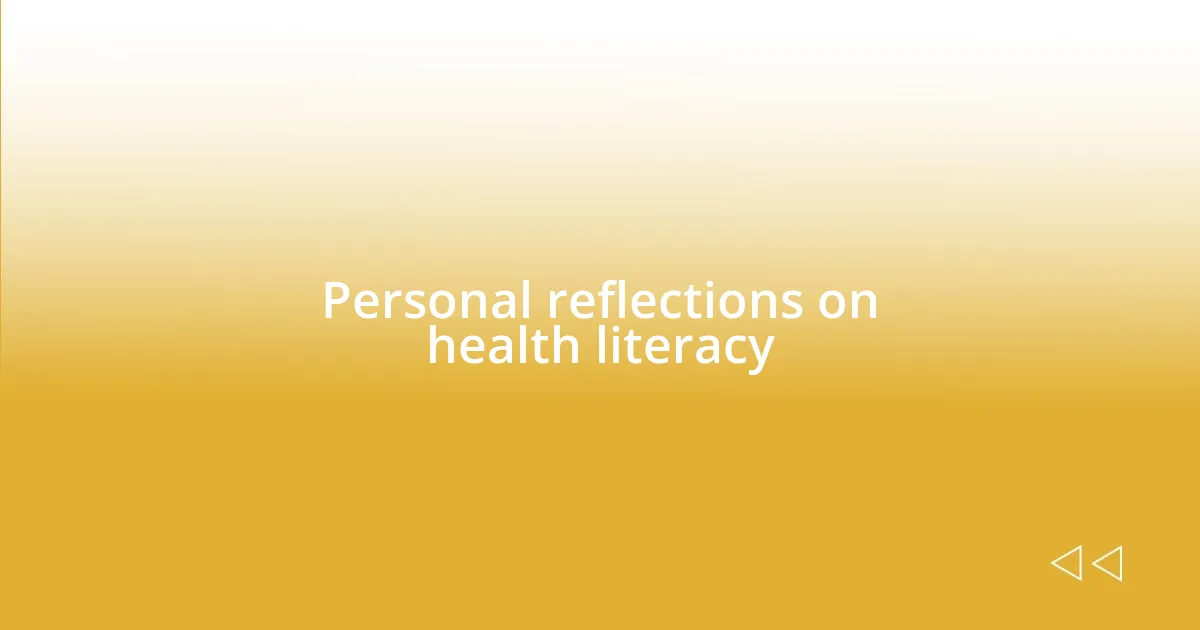
Personal reflections on health literacy
Reflecting on health literacy in schools brings back vivid memories of moments that shaped my understanding of this crucial topic. One day, while facilitating a group discussion, I noticed a student visibly uncomfortable when discussing nutrition. It struck me how personal health topics can resonate differently with each student. That scene motivated me to create a safe space in the classroom where everyone could share without judgment. Isn’t it fascinating how our emotional responses to health discussions can either open doors or shut them tight?
Another experience that stands out involves a project on mental health awareness. We created posters to communicate vital messages, and I saw the students pour their hearts into them. One student, who usually kept quiet, surprised me with a powerful piece about anxiety. Witnessing her vulnerability reminded me that health literacy goes beyond facts and figures; it’s about understanding lives and experiences. In that moment, I realized that fostering an open dialogue encourages others to share their struggles. How can we, as educators, tap into this raw energy to help other students embrace and share their health narratives?
Ultimately, my journey through health literacy has been a path of discovery, not just for my students but for myself as well. For instance, when we tackled the topic of sexual health, I was taken aback by the genuine curiosity and the thoughtful questions that arose. It made me reflect on my own knowledge gaps and the importance of staying informed. I can’t help but wonder: how can we ensure that our health literacy programs remain relevant to students’ evolving needs? Engaging in these conversations has made me a better educator, encouraging me to keep learning alongside my students—what an enriching experience!

